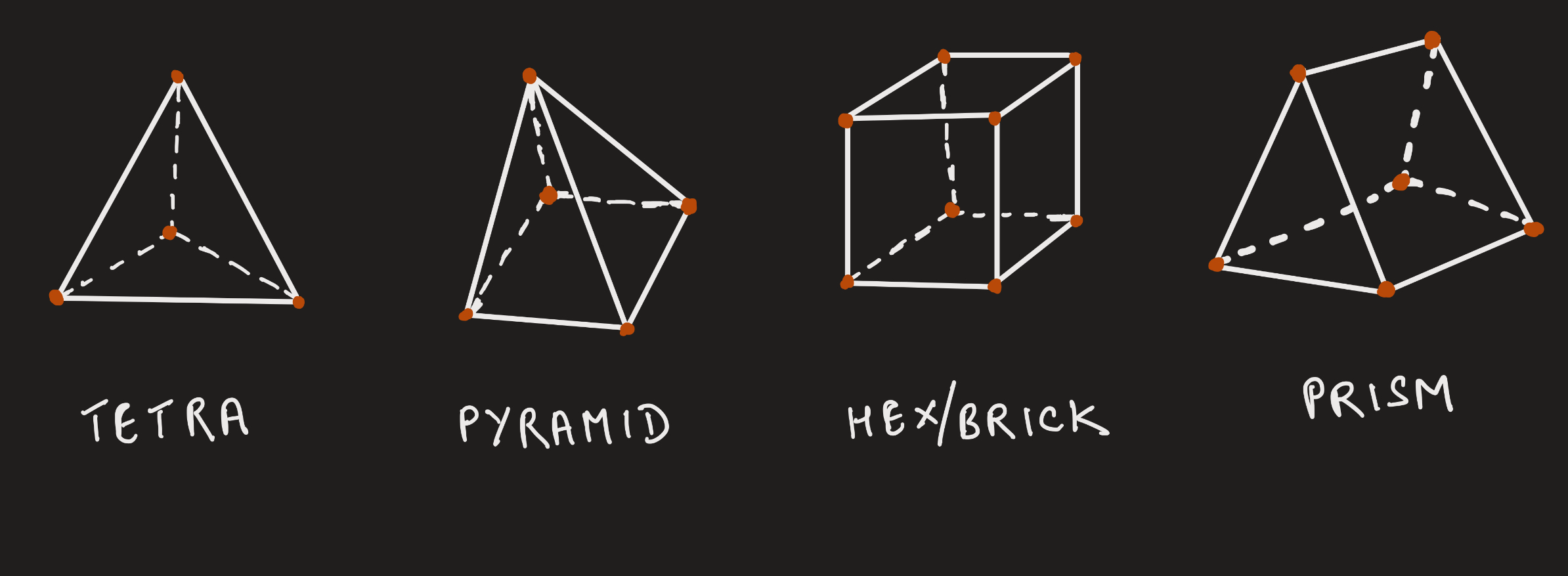In this post, we are going to discuss the difference between the different elements under similar element types, where we use them, and some thumb rules for using them.
We will start with 2D elements which consist of 3 elements, namely Trias, quads, and r-Trias.

Use of 2D elements
The white lines in the images are edges and the orange dots are the nodes at which the calculations are performed and then interpolated through the element.
In general meshing practice, we try to use Quad elements and keep the use of Tria and R-Trias elements minimal as they are stiffer than the Quad element, especially in critical areas. The number of Tria elements required to give accurate results similar or comparable to quad elements is significantly higher which can cost you a significant amount of solving or running time.
Now why are Tria elements stiffer than Quad elements? We will discuss them in one of the upcoming posts.
One thing to keep in mind is that quad elements are preferred in structural and fatigue analysis and Tria elements are preferred for casting simulations.
Quad elements are preferred in structural and fatigue because they can map an accurate result of deformation in the shape of an object as compared to Tria elements. Whereas Tria elements are preferred because they can accurately capture the stress concentration areas in castings, which is important for predicting the failure of casting.

Use of 3D elements
Tetra and Pyramid elements are the easiest options available for volume meshing under the tetramesh option in the 3D panel. Tetra elements can be used for meshing any 3D volume regardless of shape or topology. The pyramids are mainly used when creating a transition between bricks and tetra elements and they are avoided in critical areas.
Hex and tetra elements in 3D are similar to Quad and Tria elements in 2D in the sense that Hex is preferred over Tetra for more accurate results. Hex and prism elements can have a very high aspect ratio leading to the reduction in the number of elements needed to mesh the geometry.
Crash and nonlinear analysis give preference to Hex elements over tetra due to mesh flow lines and their sensitivity to deformations.
Please note that the above-mentioned preferences for the use of elements is a thumb rule and not a strict law, in the end, it’s up to the person doing the meshing to decide if he wants to mesh using only a particular type of element or a mix of elements. I would encourage people to try and mesh basic structures using all the above elements and compare the results.
Did we forget something? 1D elements is it.
In general practice for structures, 1D elements are used for connecting elements and transferring loads. For example, a beam element is used when connecting parts having tension or compression load, it also has one rotational dof; a bar element is used when there is bolted or welded joint as it has all 6 dof.
This is all for this post. Don’t forget to follow my Facebook and Instagram pages for regular updates. See you all in the next post, till then keep learning.
